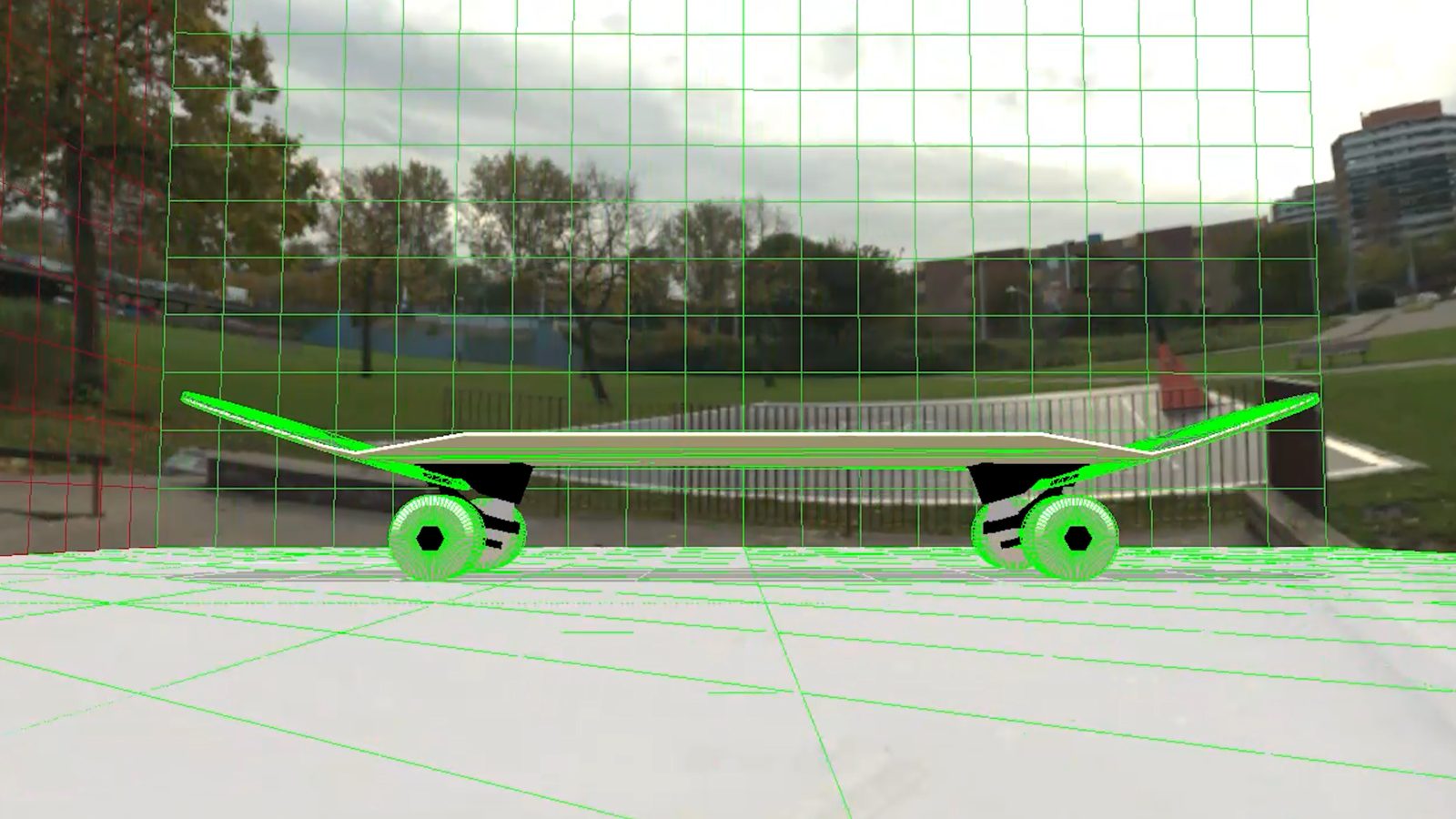Wheelbase. Simply put, it is the distance between the front and rear wheels. It varies among deck and truck brands, but in the end, what is the best? Generally, it is said that a shorter wheelbase allows you to pop lighter, and a wider wheelbase is more stable. But scientifically, is it really true?
In this video, we will scientifically and thoroughly break down the common beliefs through demonstrations and 3D simulations. I hope you will discover something you have never seen before.
Summary
What is the Wheelbase?
The wheelbase is the distance between the skateboard's front and rear wheels, affecting how it pops and performs tricks. The hypothesis is that a shorter wheelbase makes popping lighter due to leverage, while a wider wheelbase provides more stability but requires more force.
Experiment on Wheelbase Variations
A custom deck with an adjustable wheelbase was created to test different setups. The experiments showed that a wider wheelbase requires more force to pop and results in a larger board angle, affecting trick control. A narrow wheelbase makes popping easier but creates timing difficulties due to a reduced board angle, impacting the ability to Ollie effectively.
Conclusion
The experiment concludes that while the wheelbase influences the ease of popping, the board's angle plays a larger role in trick execution. You can use the Skateboard Physics Simulator to test wheelbase reactions virtually without altering their actual setup.
Hypothesis
First, let's hypothesize the relation between the wheelbase and pop. The shorter the wheelbase, the further the end of the tail gets from the truck, and therefore, due to the principle of leverage, it should allow you to pop lighter. This is just the same principle as a seesaw. The farther you sit from the fulcrum, the lighter you can push up the other side. Conversely, if the distance from the truck to the end of the tail becomes shorter, you should need more force to pop.
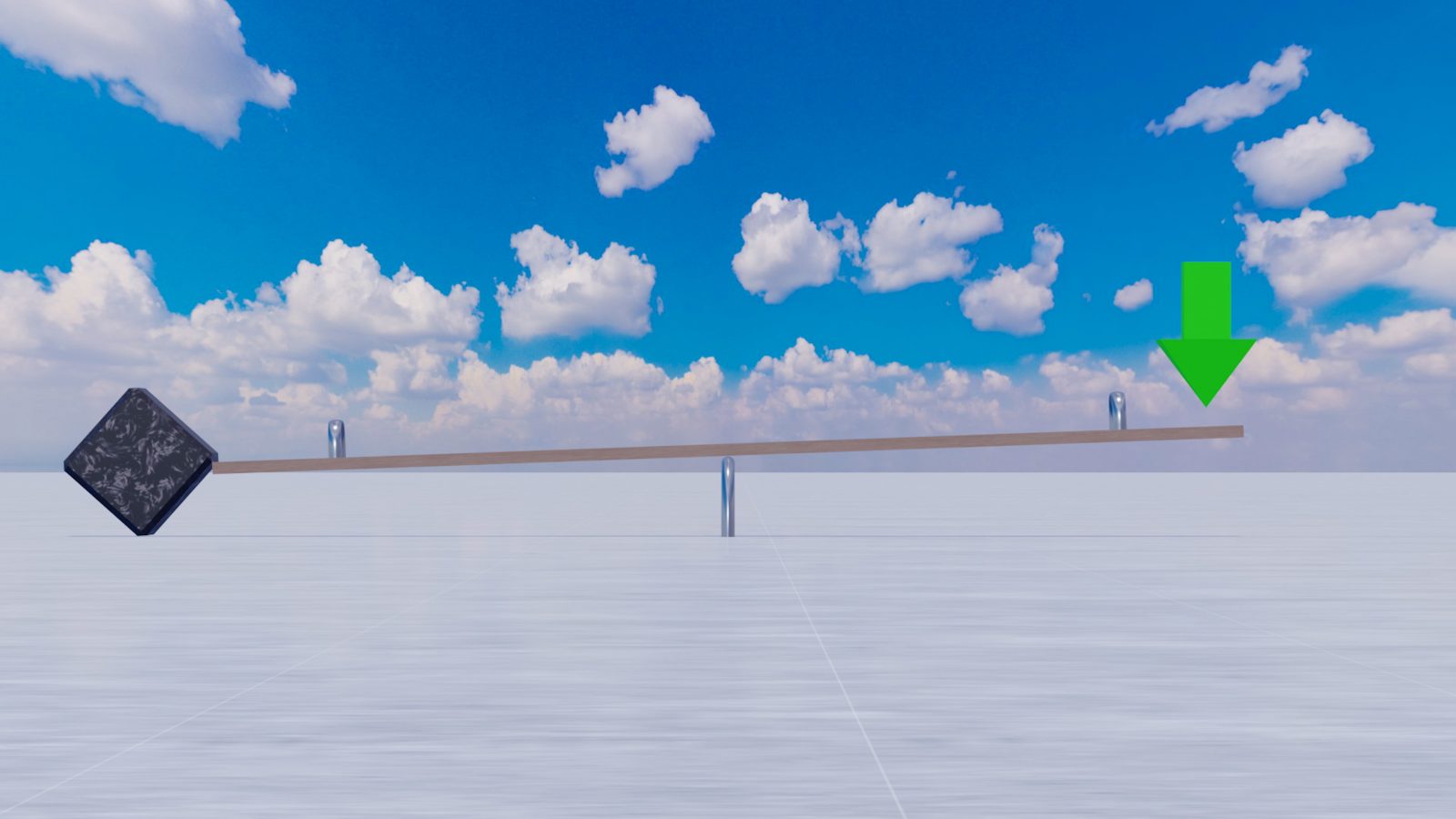
Preparation
Making an adjustble wheelbase deck
In order to prove this hypothesis in the real world, I built a deck that I can adjust its wheelbase steplessly. What I need to do is simple: drill grooved holes with a drill. It's a lot of smoke and noise. I was afraid the neighbors might call the police or fire department at any moment in a dense apartment in Japan. However, I was more than determined to do what I could to avoid repeating the failure of the previous stepless-adjustable tail deck.
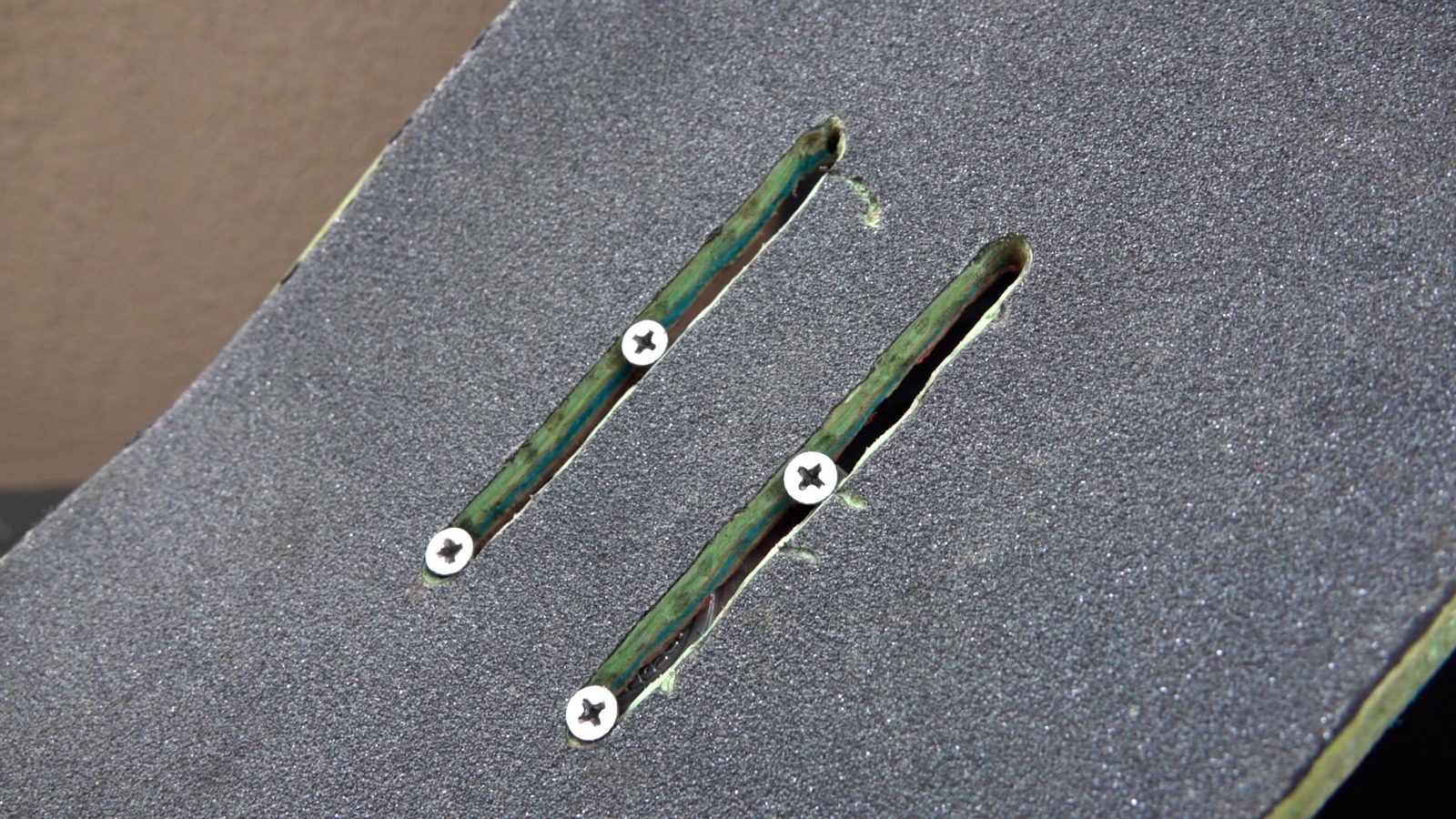
Completed design
Look how beautiful it is! It is as if the endless possibilities of science are overflowing from the layers of the deck. Structural integrity? Well, let's not talk about it.
(The setup I used is an Almost 8.0 Inch deck, Independent Forged 11 trucks, and Bones 53mm wheels.)
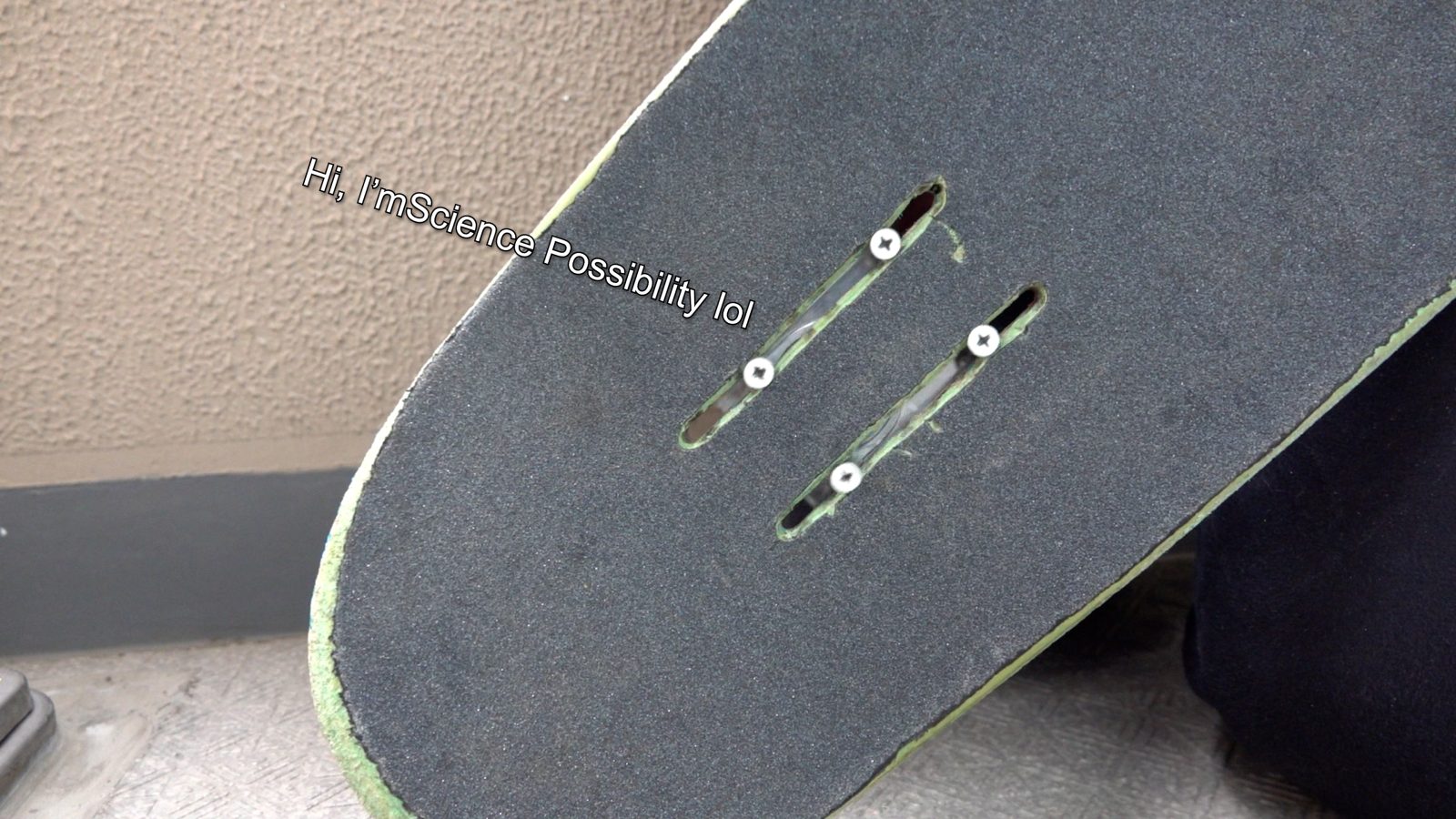
Experiment
Premises
In this experiment, I will try Ollies with "a normal wheelbase," "a wide wheelbase," and "a narrow wheelbase" and see how they respond.
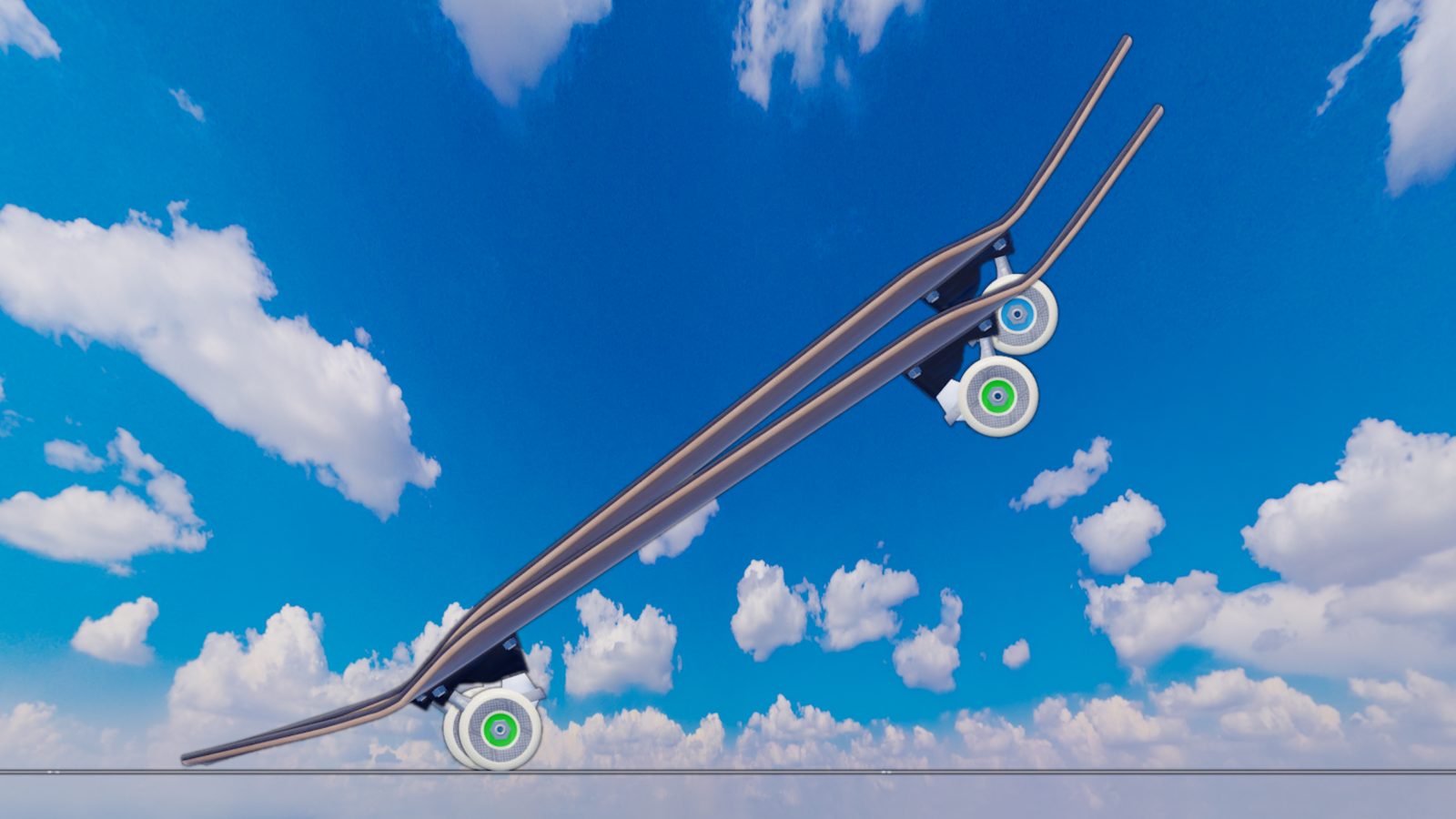
Normal Wheelbase
In the case of a normal setup, I can Ollie normally. I didn't feel much difference from the normal deck.
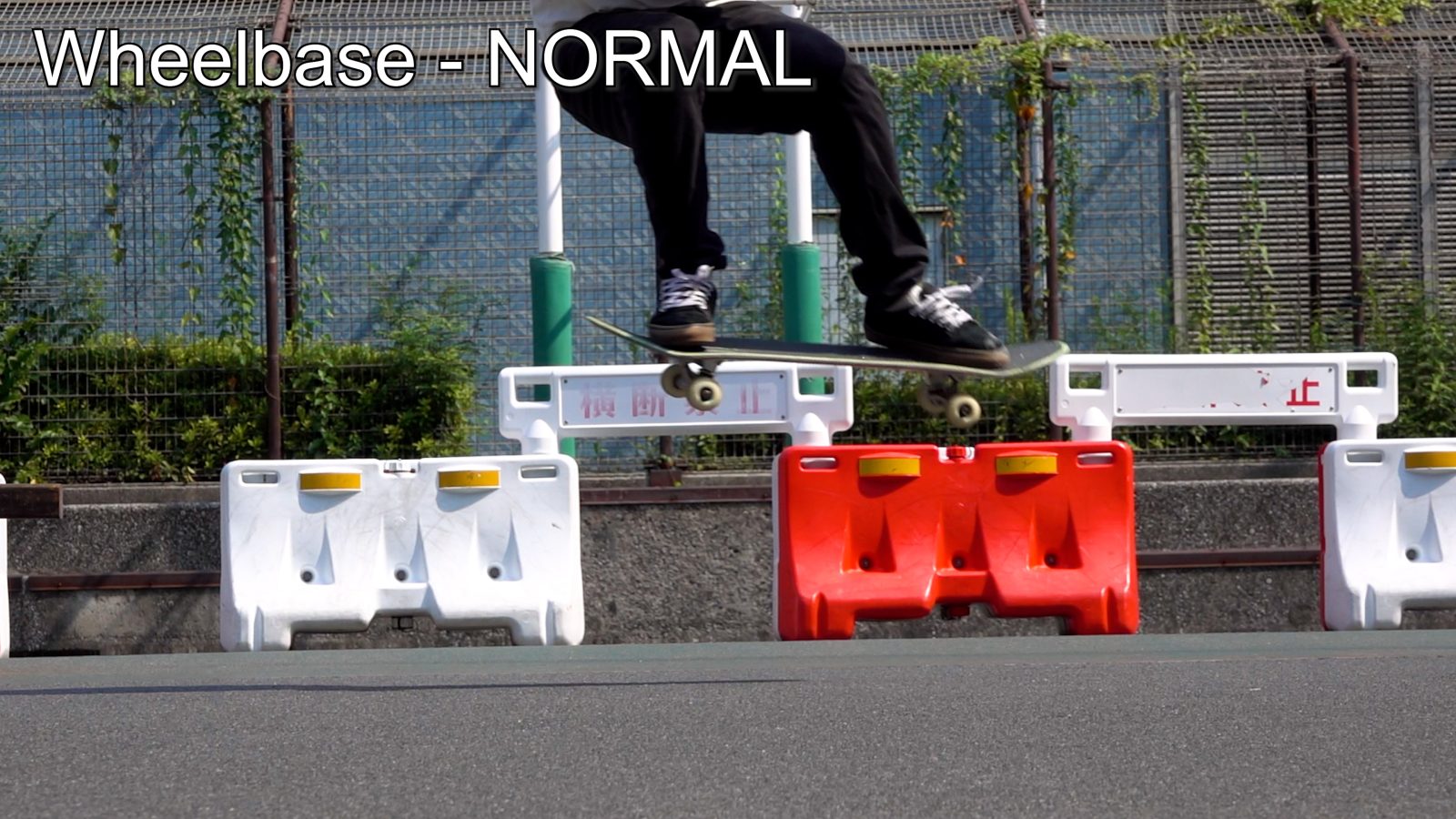
Wider Wheelbase
In the case of a wider wheelbase, it certainly felt I needed more force to pop. However, I soon realized that there was a way bigger difference than the force to pop. And that is the angle of the board when popped.
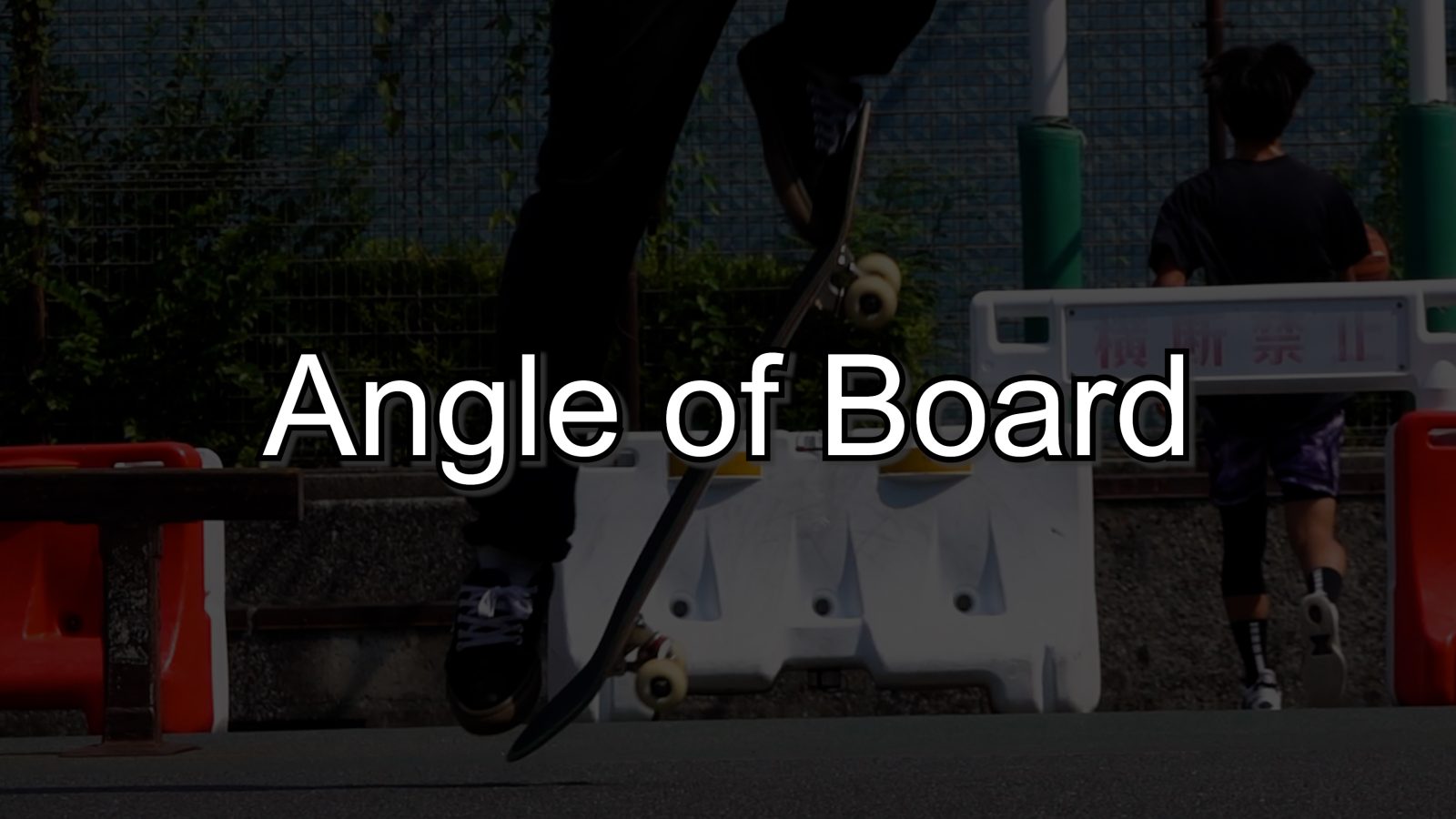
The wider the wheelbase, the closer the distance between the end of the tail and the truck, so the angle of the board when the tail reaches the ground becomes greater than a normal deck. As a result, the nose bites harder into the front foot.
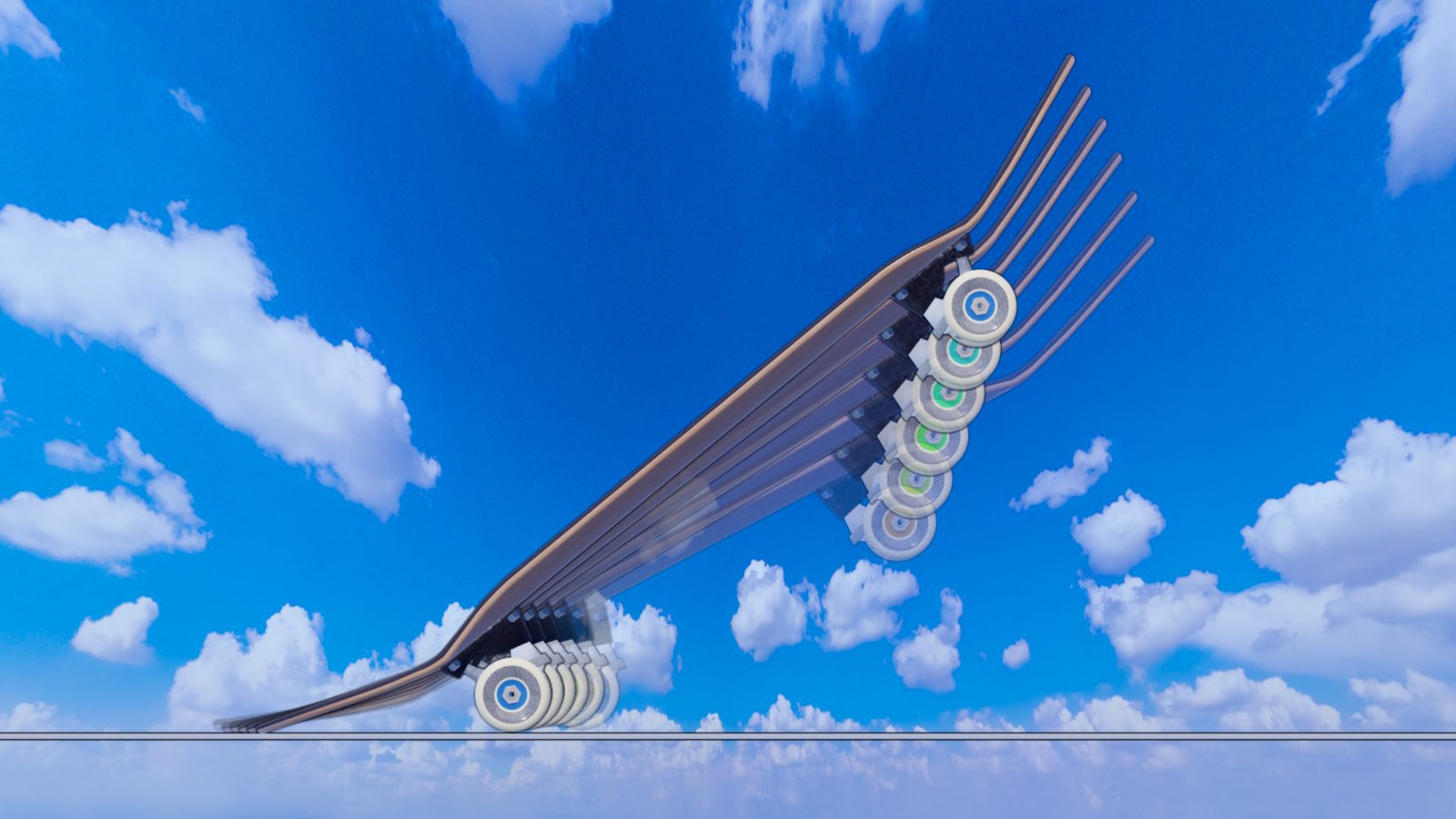
You might think that a stronger bite on the front foot would make it easier to control the board with the front foot, but this is not always a good thing. In the previous video, I explained that in the second half of an Ollie, you can lift the tail by pushing your front foot down against the nose. It is not easy to do so while the board is pressing against the front foot hard.
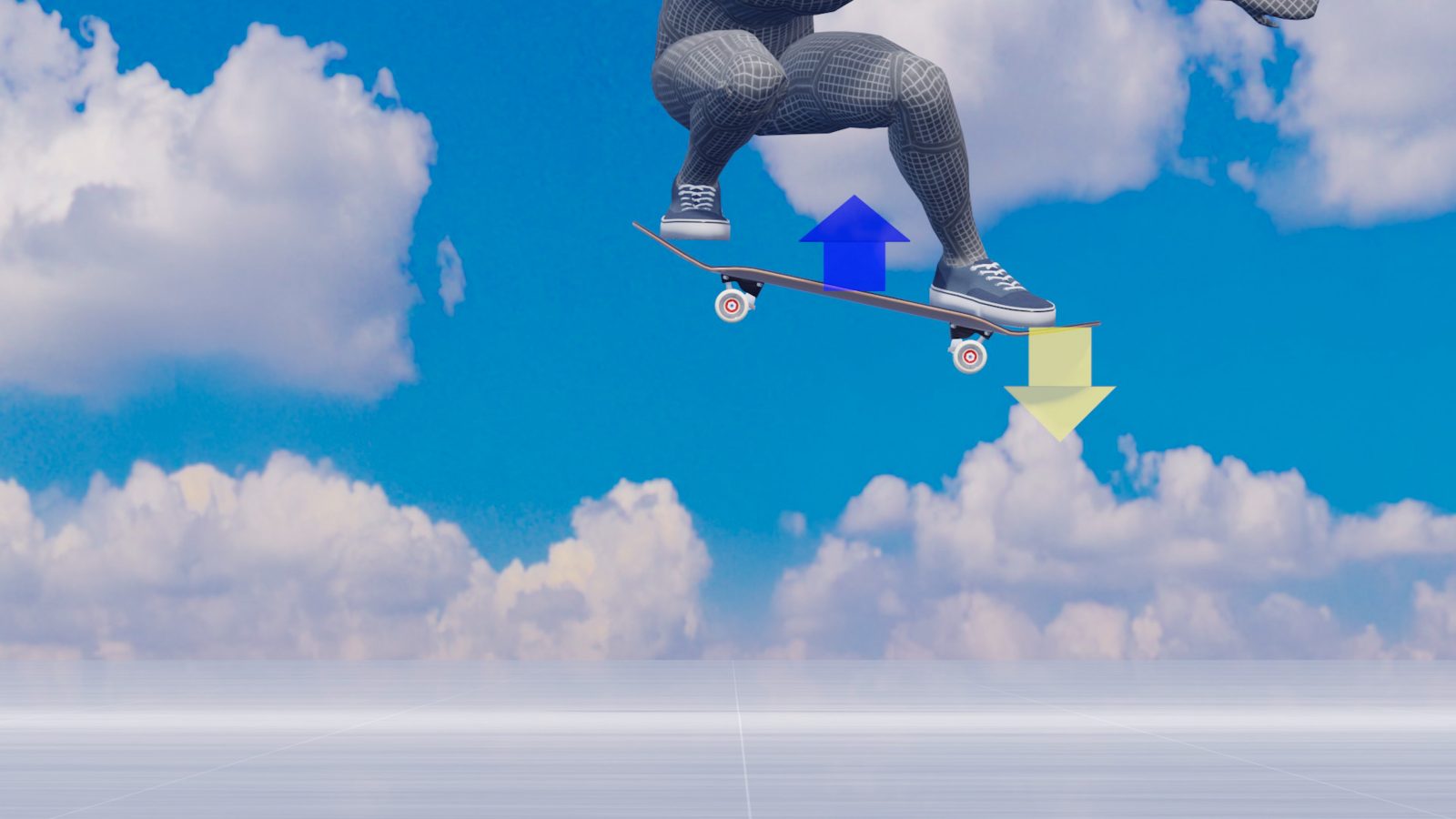
This leads to the following conclusions: although it is possible to Ollie with a wider wheelbase, you need more force to pop the tail. And because the board's angle gets bigger, you have to adjust the timing and how to use your front foot.
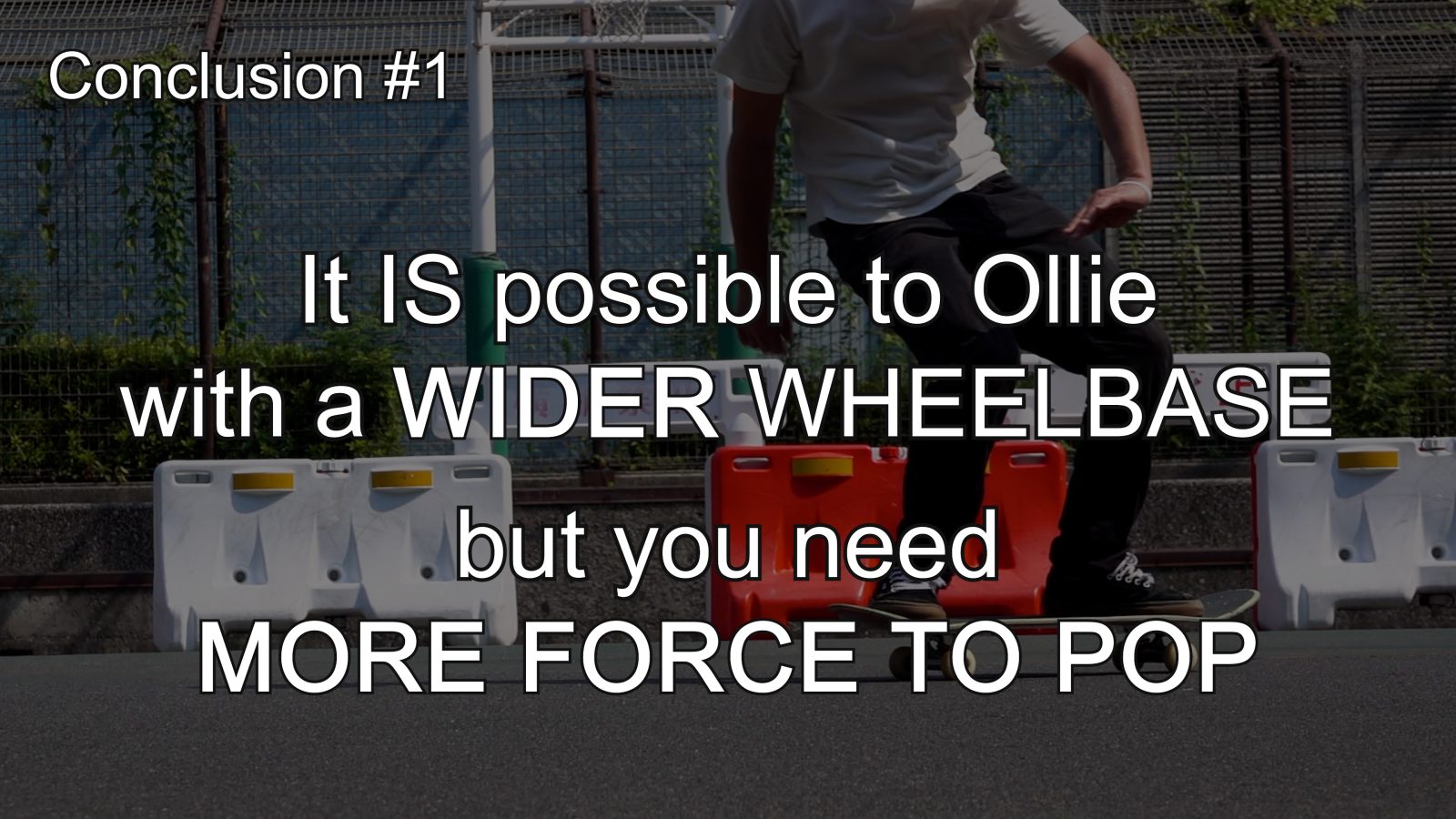
Narrow Wheelbase
Now, let's see the case of a narrow wheelbase. Although the force required to pop has become significantly smaller, its timing has become very difficult as the tail lowers even if I step on it a little bit.
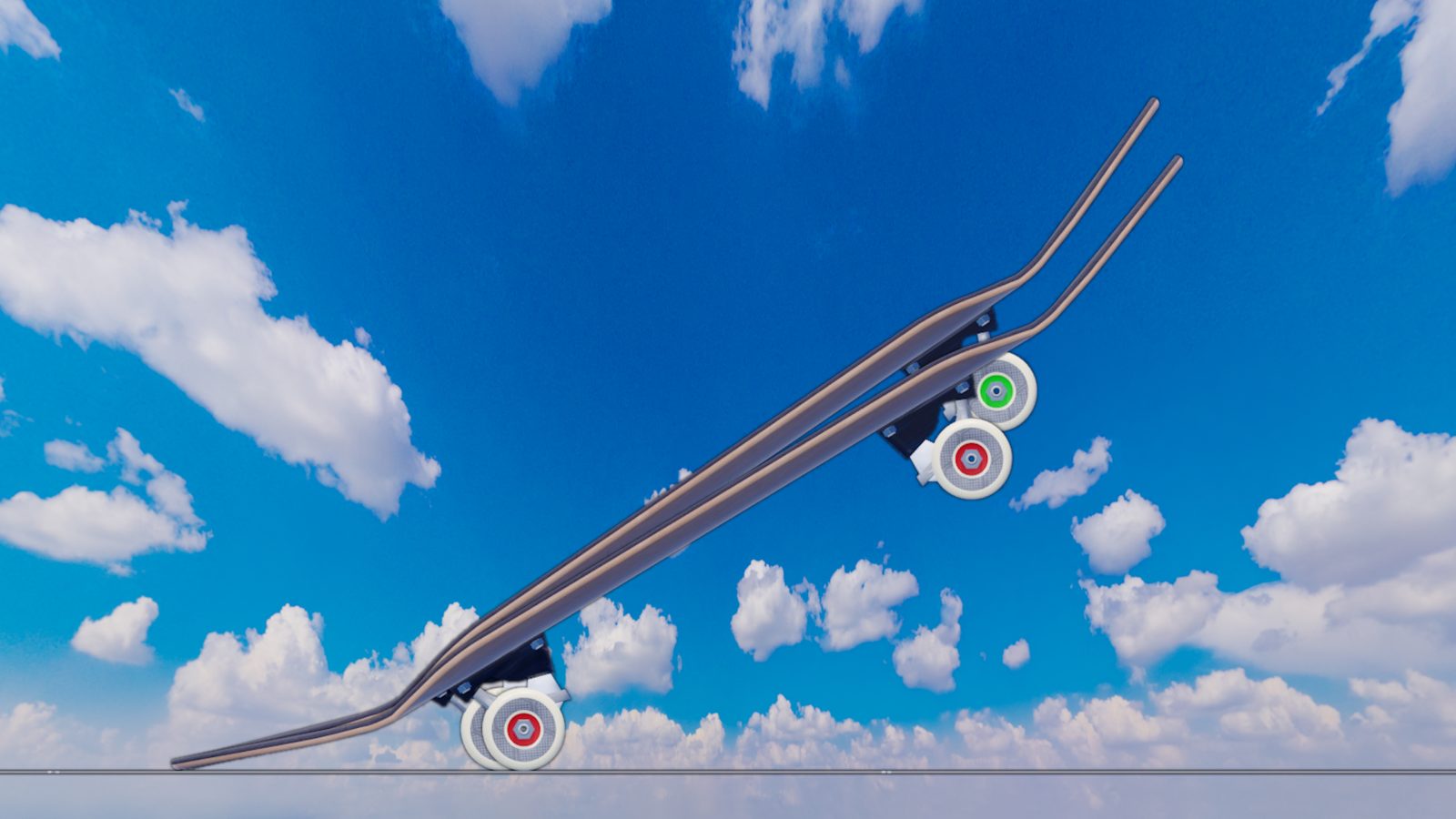
Plus, as before, the bigger problem than the force required to pop was the angle of the board. When I popped as usual, the nose did not lift enough, and I could not even do my usual Ollie.
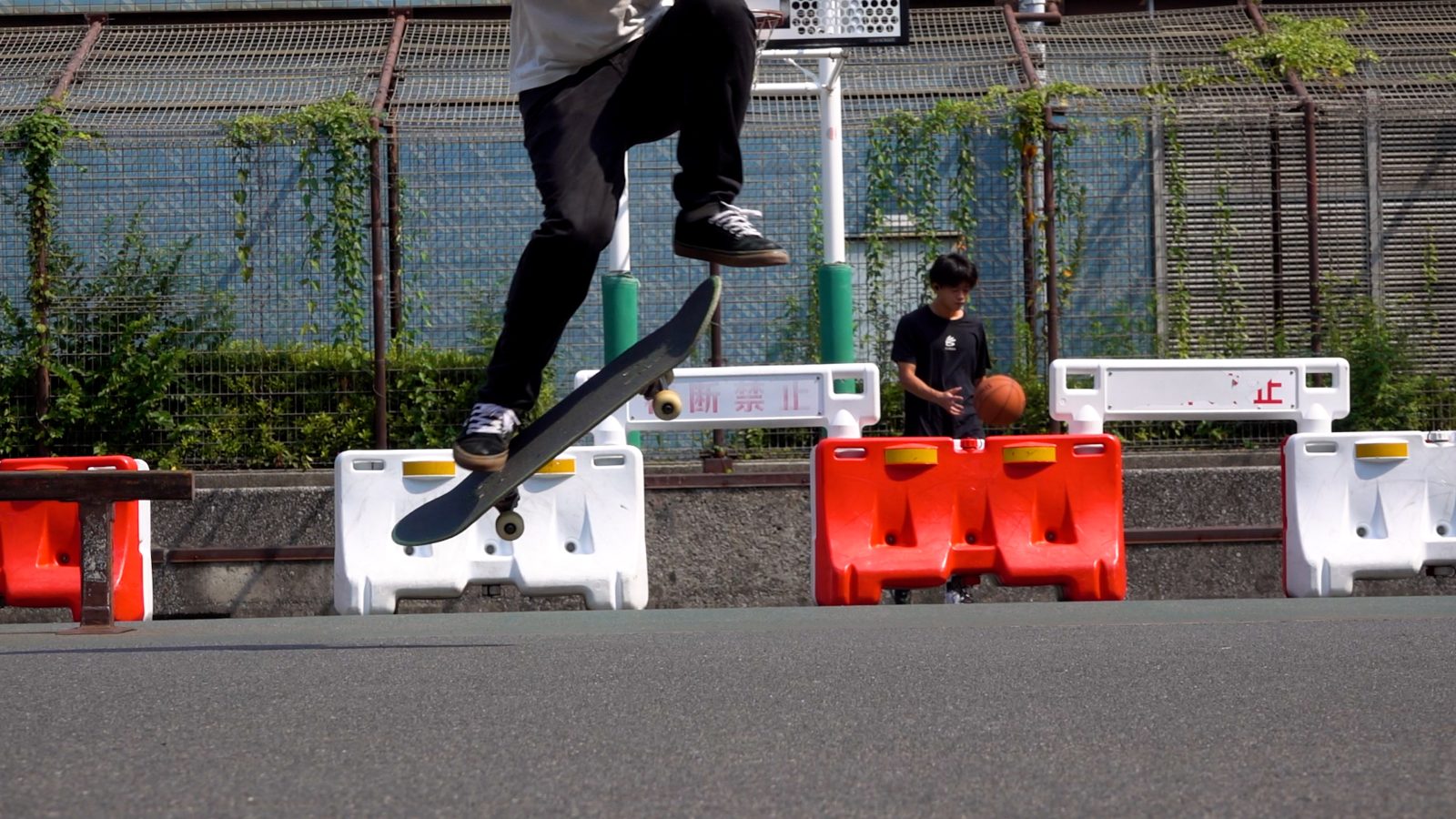
This is because the narrower the wheelbase, the greater the distance between the end of the tail and the truck, and the angle of the board when the tail reaches the ground becomes smaller than usual. As a result, the nose cannot come up to the height at which the front foot normally reaches, and it misses the nose.
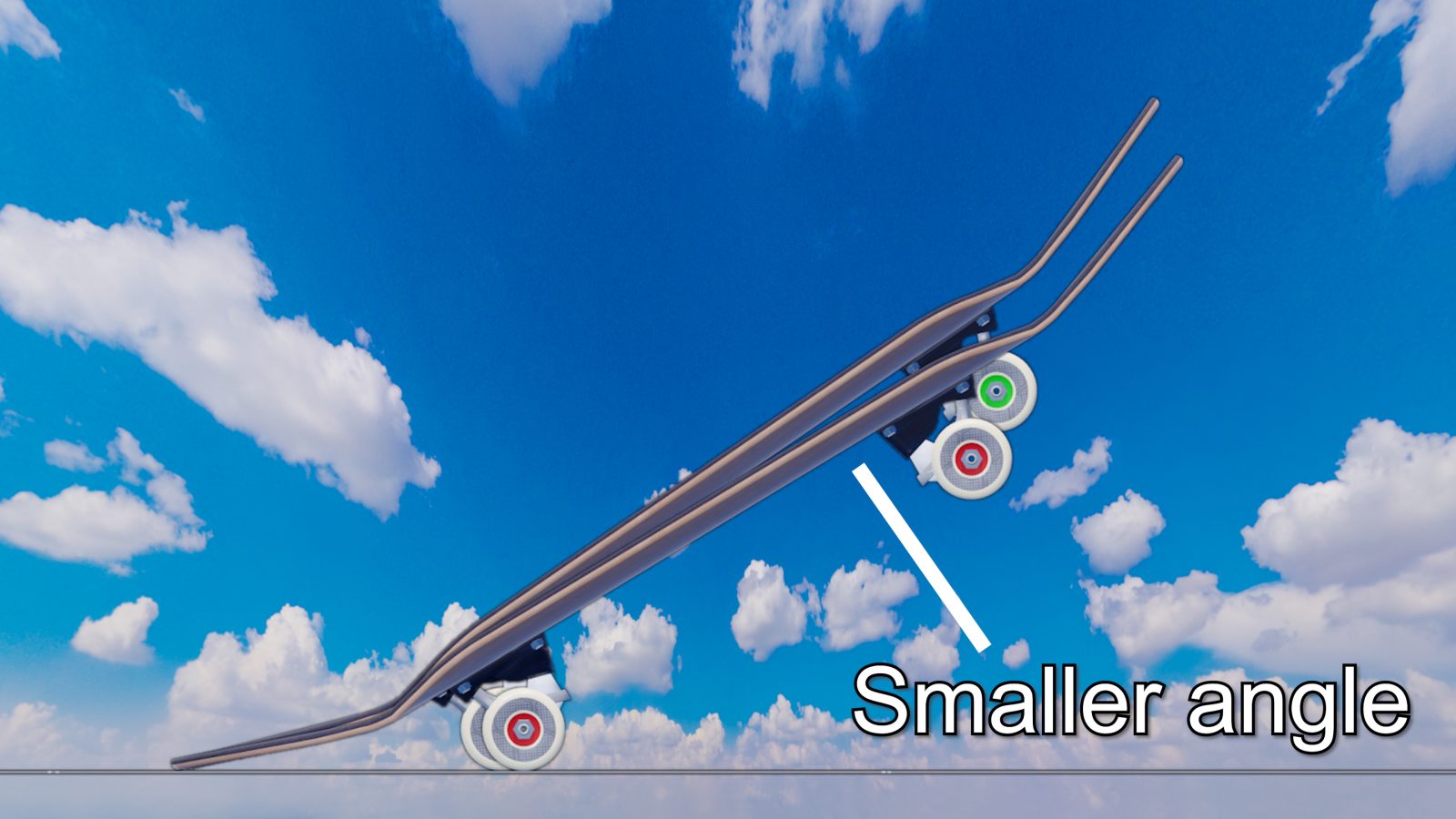
So, I had to keep my front foot low, which eventually made the Ollie itself low. It took me some time to get used to this feeling before doing some tricks, such as kickflips, nose slides, and tailslides. It was a weird feeling, though.
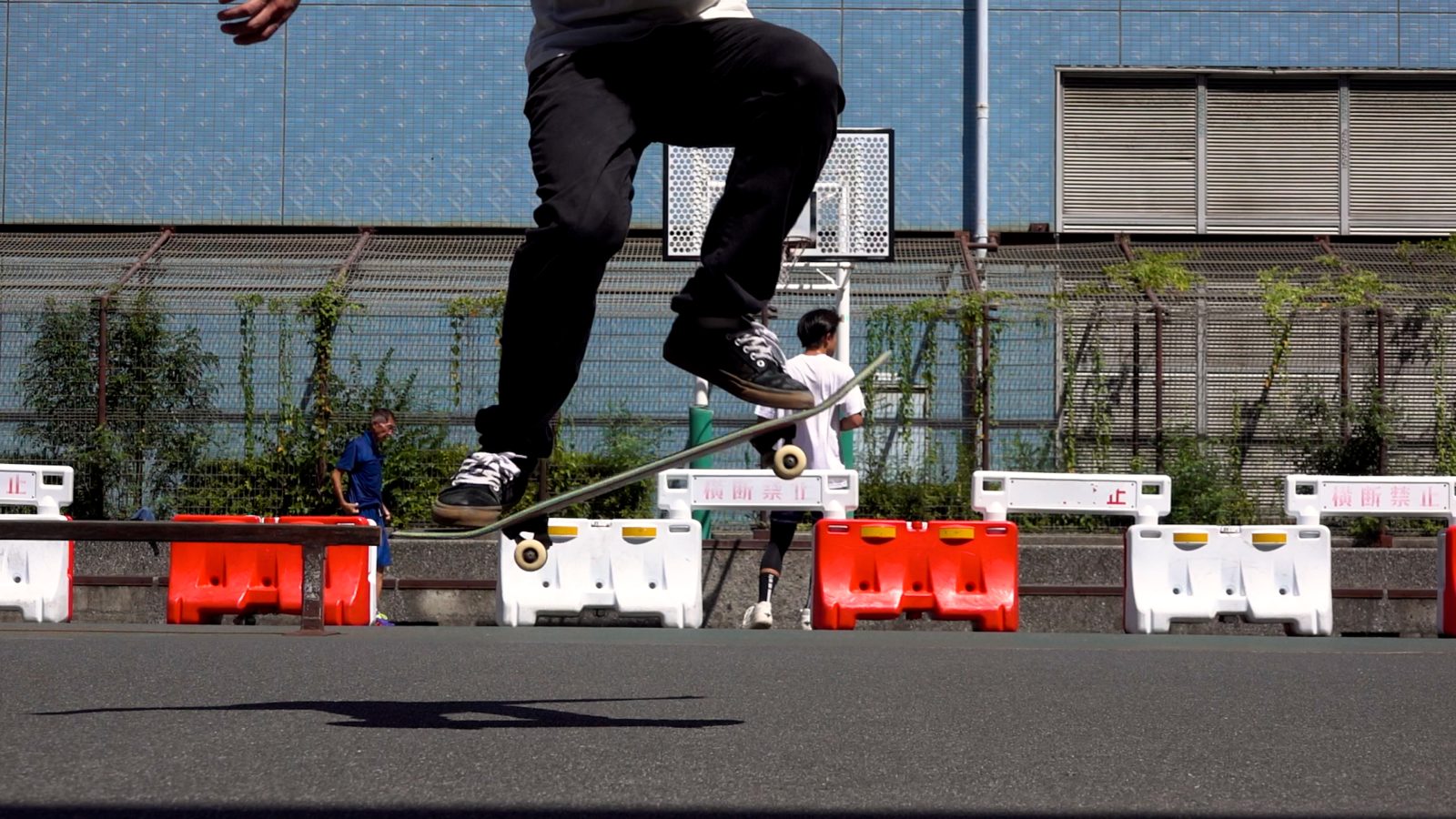
Conclusion
From these results, while adjusting the wheelbase changes the ease of popping, I also found that the angle of the board had a greater impact on the ease of tricks.
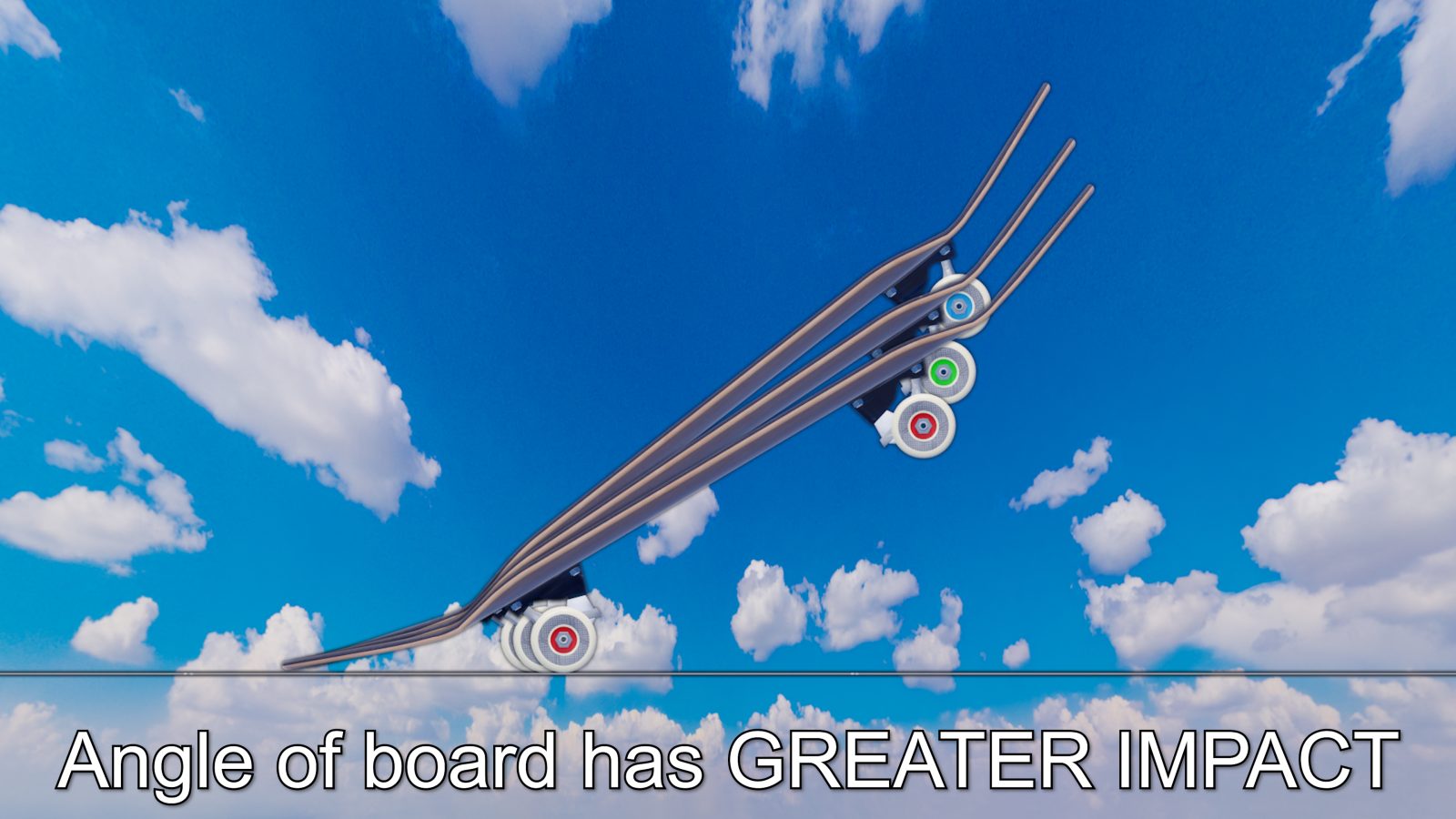
Of course, this experiment is an extreme example. In reality, the angle and length of the tail and the height of the trucks should also have a lot of effect on the angle of the board. Also, even with a narrow wheelbase, if it is not narrowed as greatly as in this experiment, it may be possible to pop the board with light force while maintaining sufficient force to lift the nose.
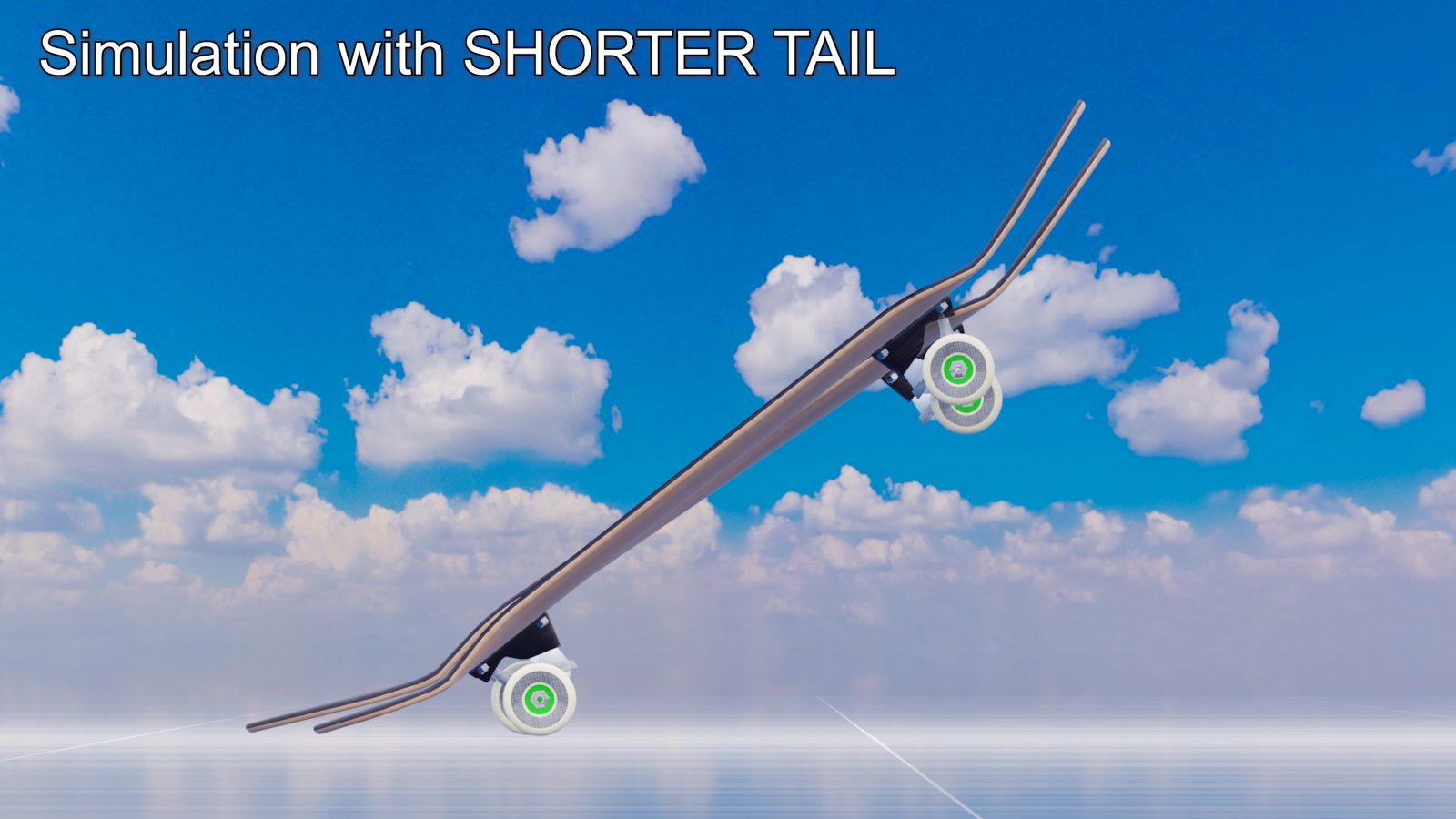
Wheelbase Simulator
Which wheelbase should you choose?
Sorry, it depends on your style so I can't say anything decisive. But I've added a new function to freely adjust the wheelbase to the physics simulator I introduced earlier, which allows you to test multiple conditions without having to buy a new deck or truck.
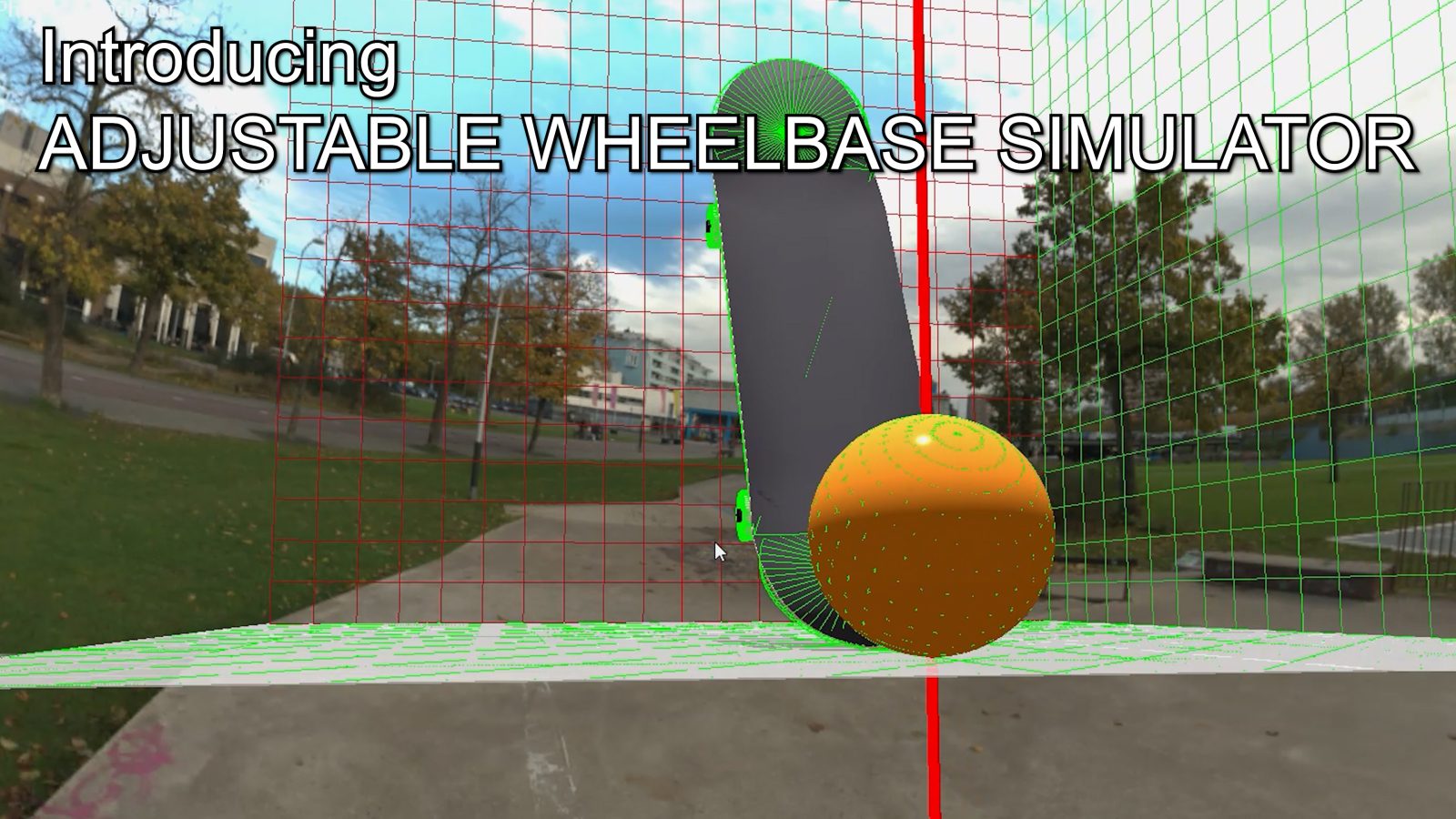
How to use the system #1
Move the slider on the side of the screen, and the wheelbase of the 3D model changes. By pressing the Rerun button, you can recreate a skateboard in this state and simulate what happens when you pop the tail.
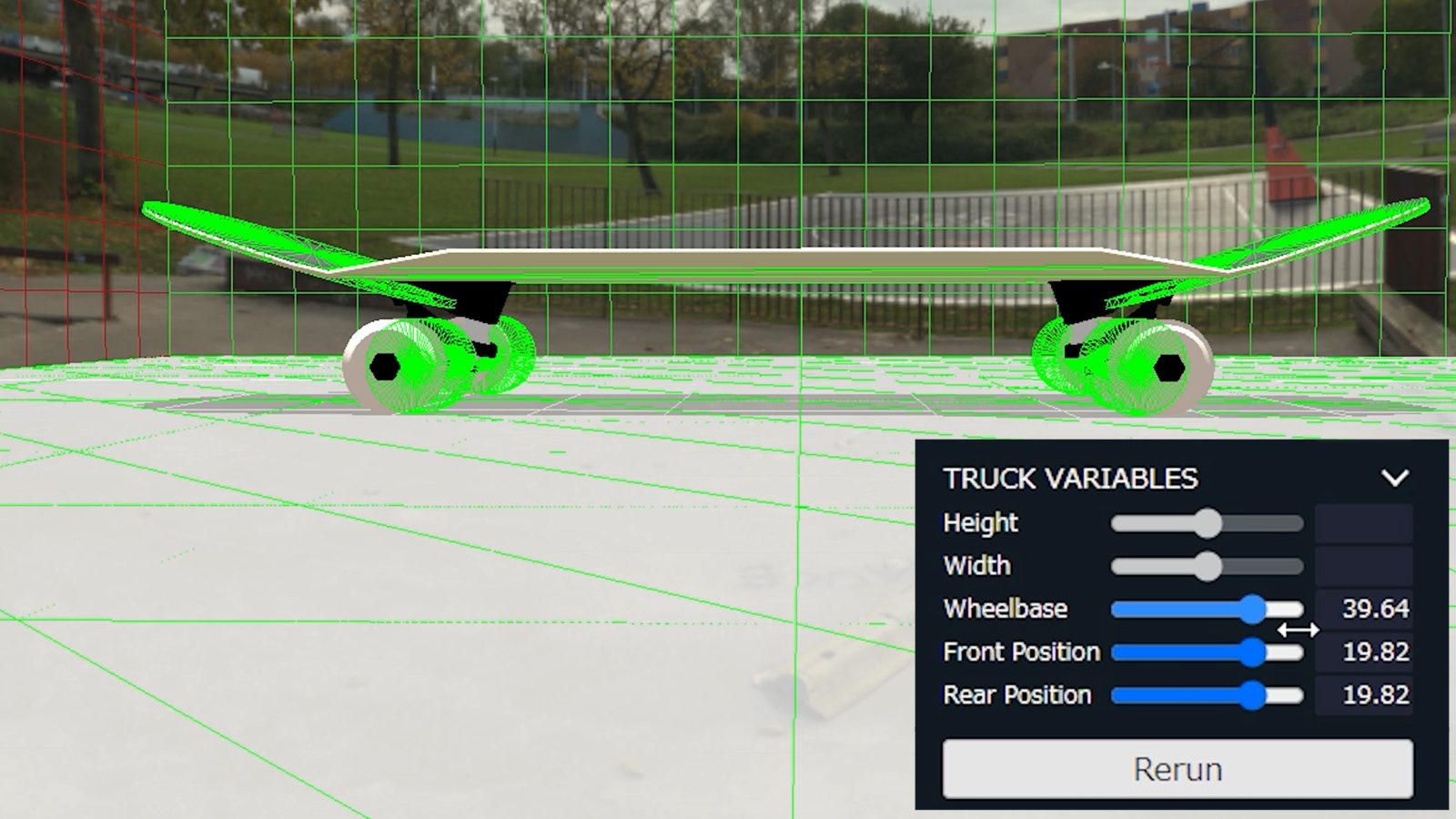
How to use the system #2
This system also allows you to freely change the weight of the sphere to drop, which represents how hard you pop the tail. You can see that with the same weight of the sphere, the tail does not reach the ground with a wider wheelbase, while it does with a shorter one.
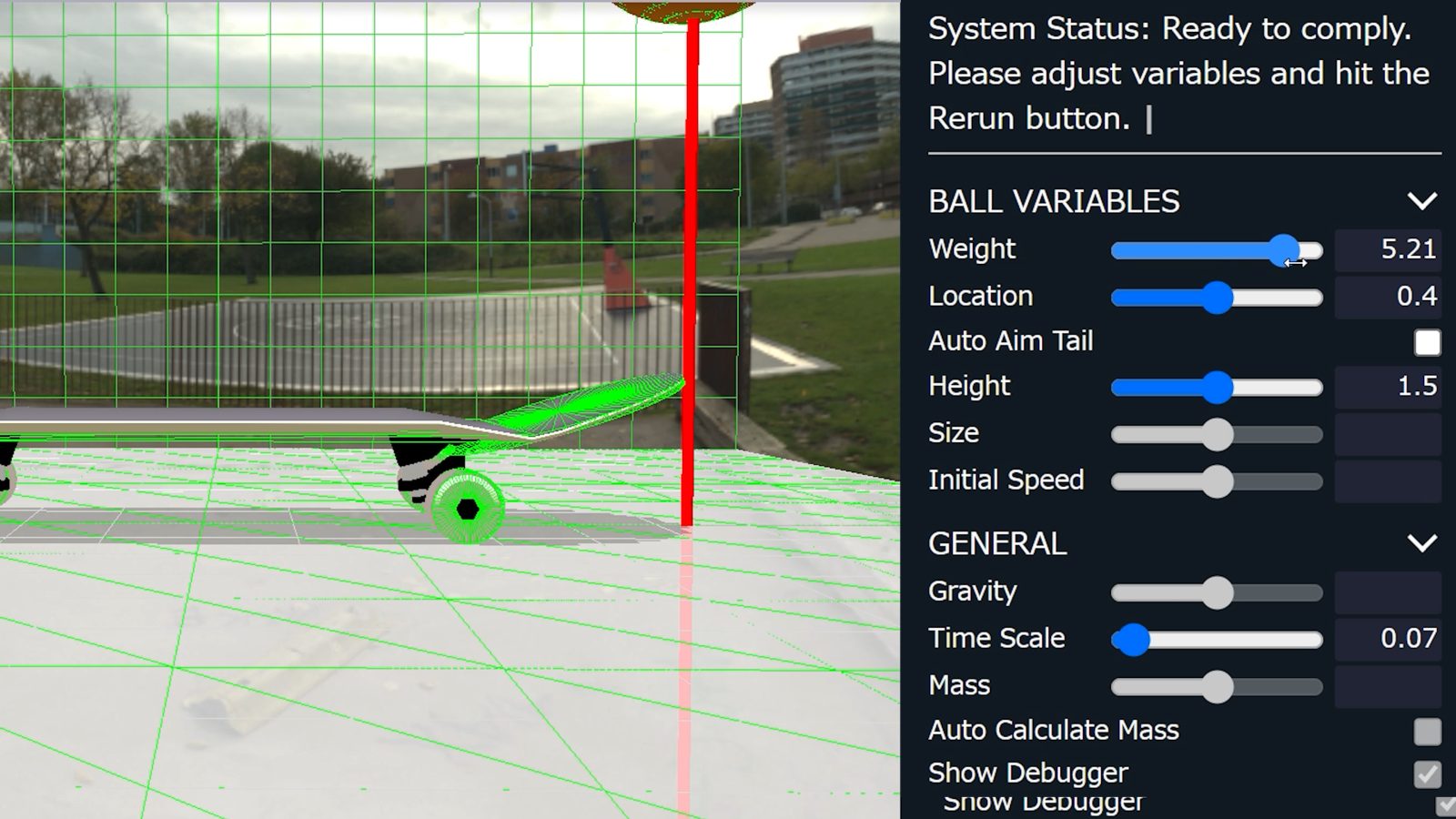
How to use the system #3
And if you lighten the weight of the sphere, the tail does not reach the ground with a normal wheelbase, but it does with a shorter one.
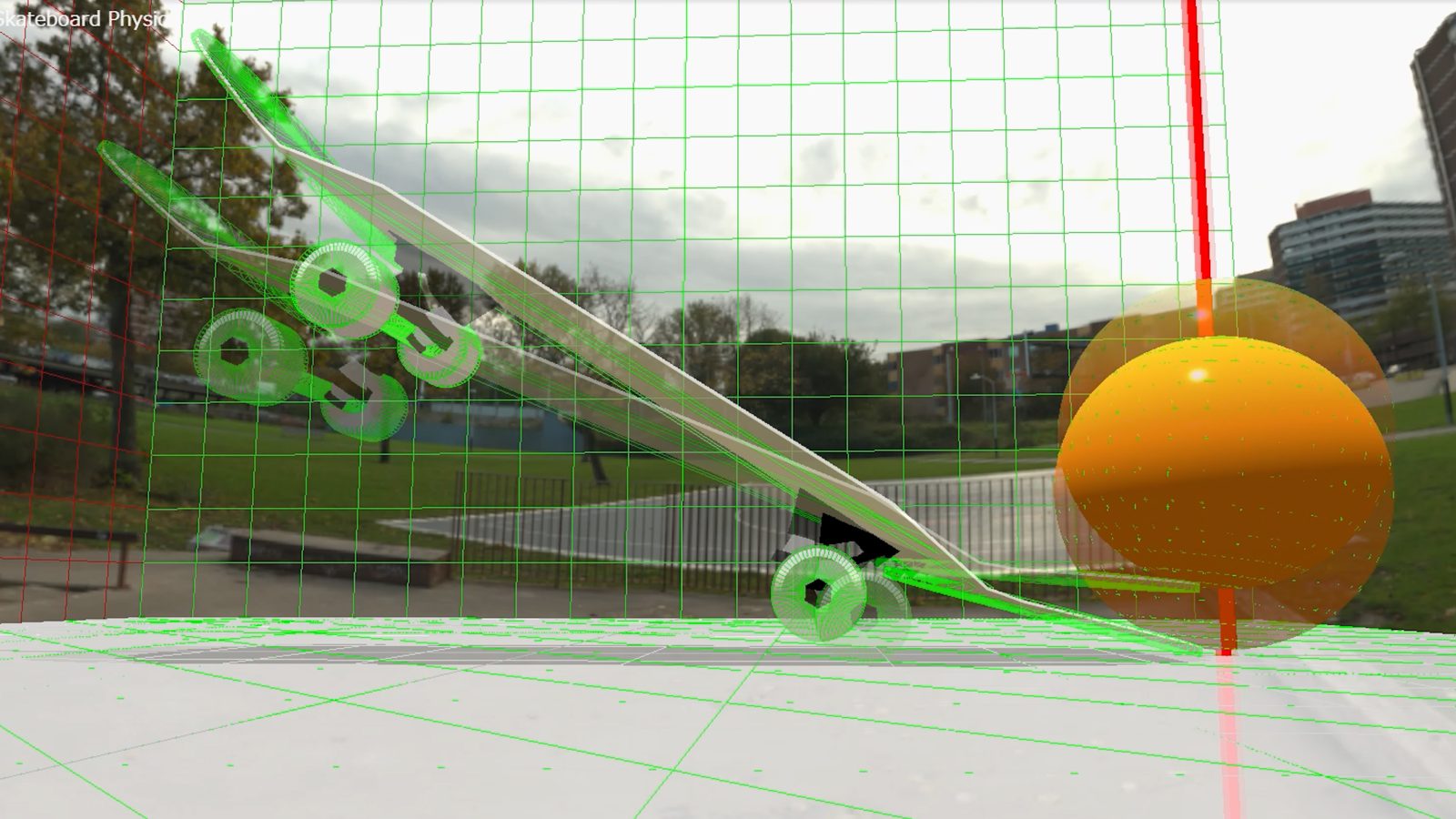
This system is free, so please make good use of it to test the reactions of a wheelbase you want to test.
